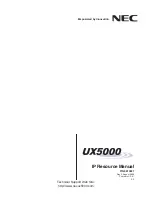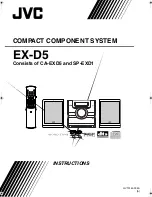
00074635.DOC, Version 1.0
12/17
2. SAFETY INSTRUCTIONS
This device has left our premises in absolutely perfect condition. In order to maintain this condition and to
ensure a safe operation, it is absolutely necessary for the user to follow the safety instructions and warning
notes written in this user manual.
Important:
Damages caused by the disregard of this user manual are not subject to warranty. The dealer will
not accept liability for any resulting defects or problems.
Maintenance and service operations are only to be carried out by authorized dealers. Damage caused by
manual modifications on this device is not subject to warranty. If the device is used for other purposes than
originally intended or if it is not correctly connected, the product may suffer damages and the guarantee
becomes void.
Protect the devices against humidity and heat. The ambient temperature must always be between -5° C and
+45° C. The relative humidity must not exceed 50 % with an ambient temperature of 45° C.
Never put any liquids on the devices or close to it. Should any liquid enter a device nevertheless have it
checked by a qualified service technician before you operate it again. Any damages caused by liquids having
entered the devices are not subject to warranty!
For cleaning, only use a soft lint-free and moistened cloth. Make sure not to allow any water to enter and
never use any solvent cleansers. Always disconnect from the mains, when the transmitter is not in use or
before cleaning it.
Always plug in the power unit last. The transmitter and the receiver fall under protection-class III. The
receiver always has to be operated with an appropriate power unit.
Batteries are hazardous waste which need to be disposed of appropriately. If the device is to be disposed,
the batteries have to be removed first. Make sure that the poles are correct when inserting the battery. Never
let batteries lying around openly as there is the danger that these can be swallowed by children or domestic
animals. Immediately consult a doctor when batteries are swallowed! Leaking or damaged batteries can
cause irritations when getting into contact with the skin. In this case use appropriate protective gloves. Make
sure that the batteries cannot be short-circuited, thrown into the fire and be charged. There is a danger of
explosion. Never spill any liquids on the device. Should any liquid enter the device nevertheless, remove the
batteries immediately. Please let the device be checked by a qualified service technician before you operate
it again. Any damages caused by liquids having entered the device are not subject to warranty!
3. OPERATING DETERMINATIONS
The wireless microphone system
UHF-201
consists of a dynamic hand-held microphone with integrated
transmitter which serves for wireless signal transmission to the receiving unit. The transmission range is
approx. 50 m and depends on the local conditions. The microphone system is available for four different
transmission frequencies. Due to the color code it can easily be recognized which microphone operates with
the respective receiver. Matching pocket transmitters are available as accessory.
The receiver is only allowed to be operated with the supplied power unit, which is allowed to be operated
with 230 V AC, 50 Hz ~. The microphone operates on two 1.5 V AA batteries. The devices were designed for
indoor use only. Never remove the serial barcode from the devices as this would void the guarantee.
3.1 Approval
This wireless system was tested in accordance with the European standards EN 301489-1, EN 301489-3
and EN 60065. Consequently, this product adheres to the R&TTE directive of the European Union and does
not need an individual EC type examination of every member state. The system falls into equipment Class 1.
The notified body is
1622
. In all EU member countries, the operation of this wireless system is generally
approved by the national telecom regulatory authority. The system is license-free. In some countries outside
the EU, the operation of this wireless system may needs to be approved by the national telecoms regulatory
authority.



































